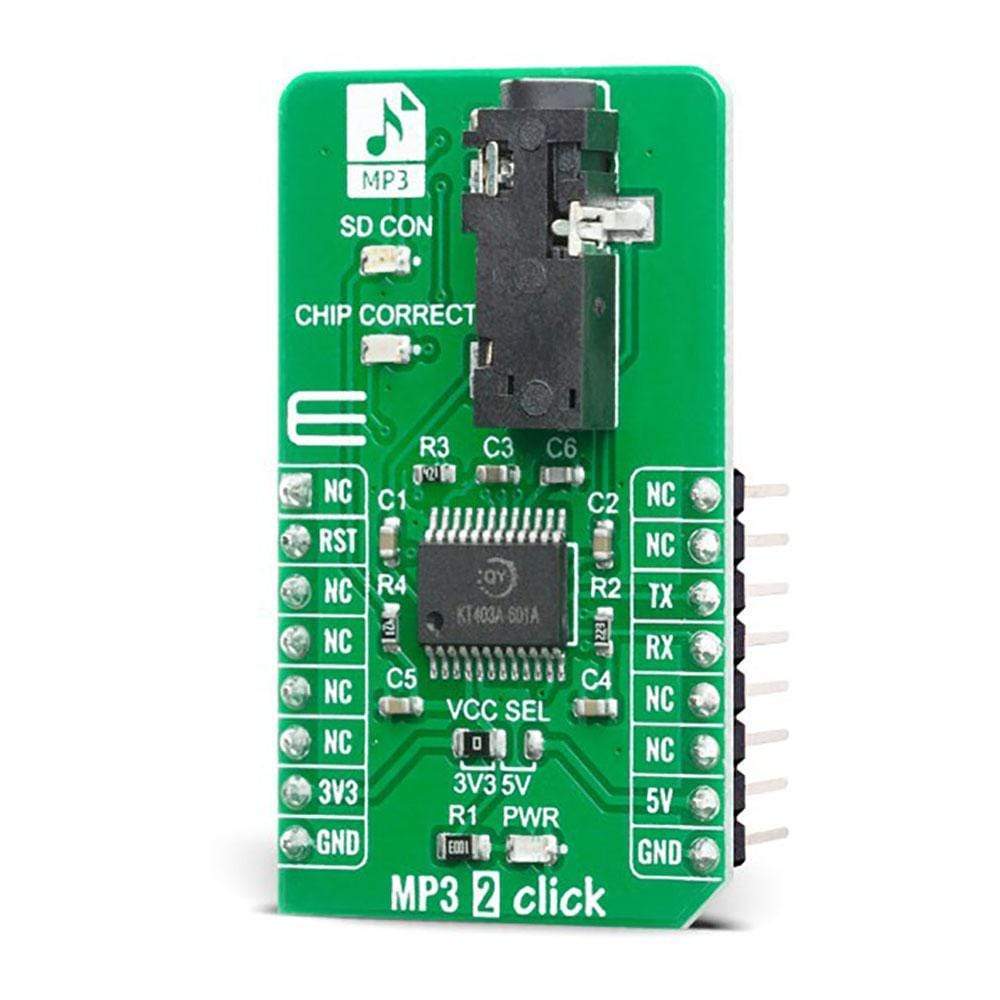
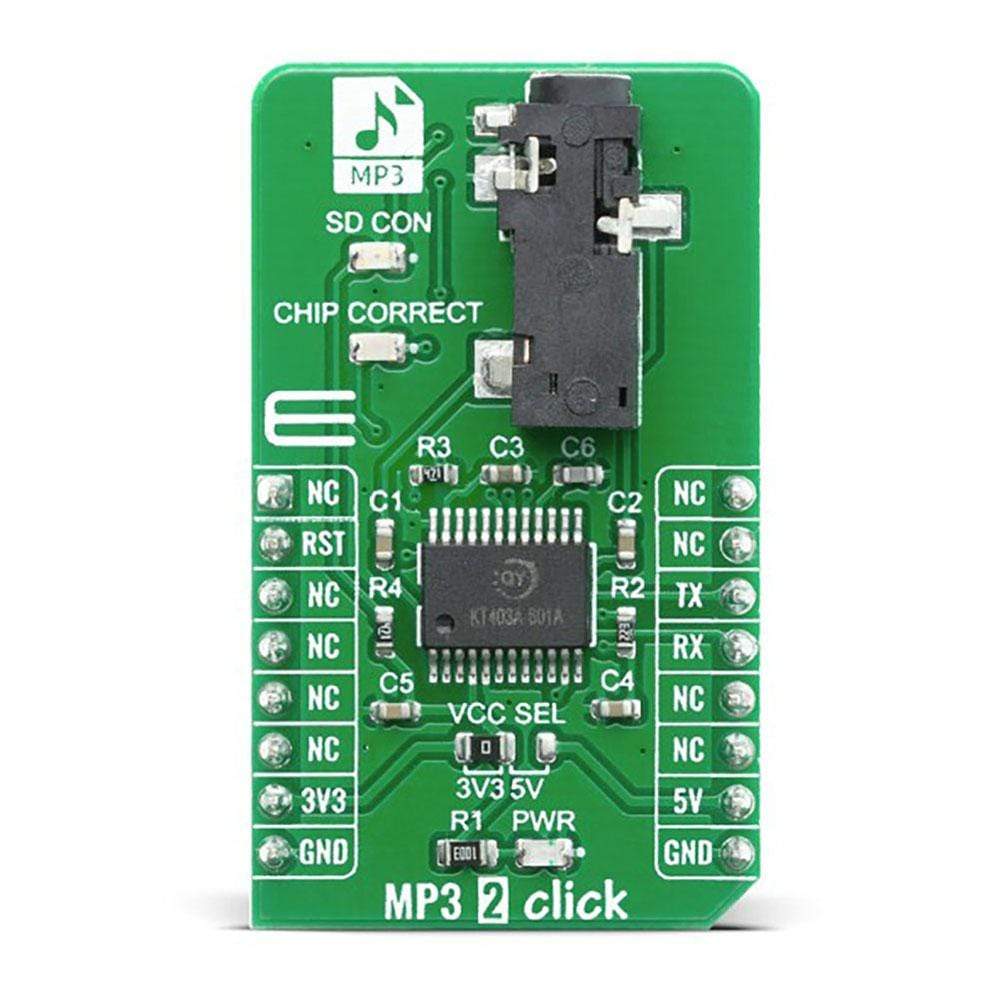
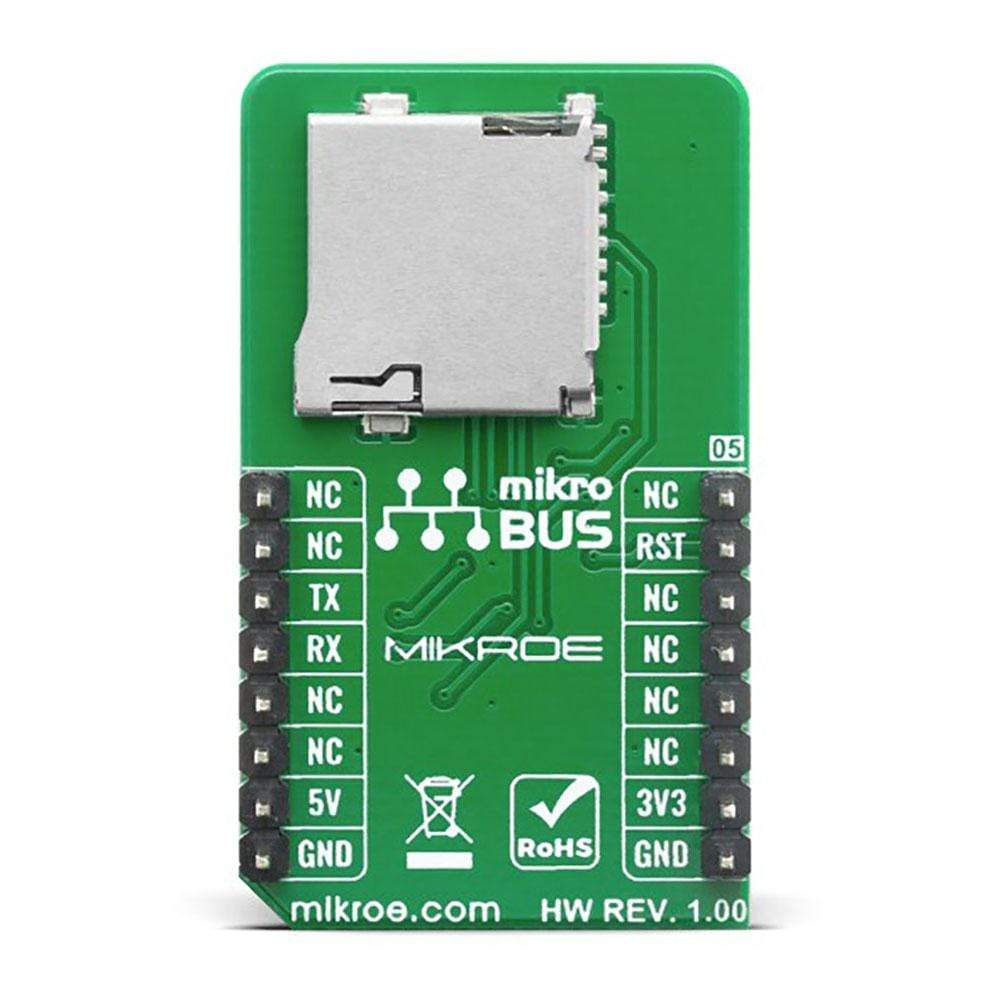
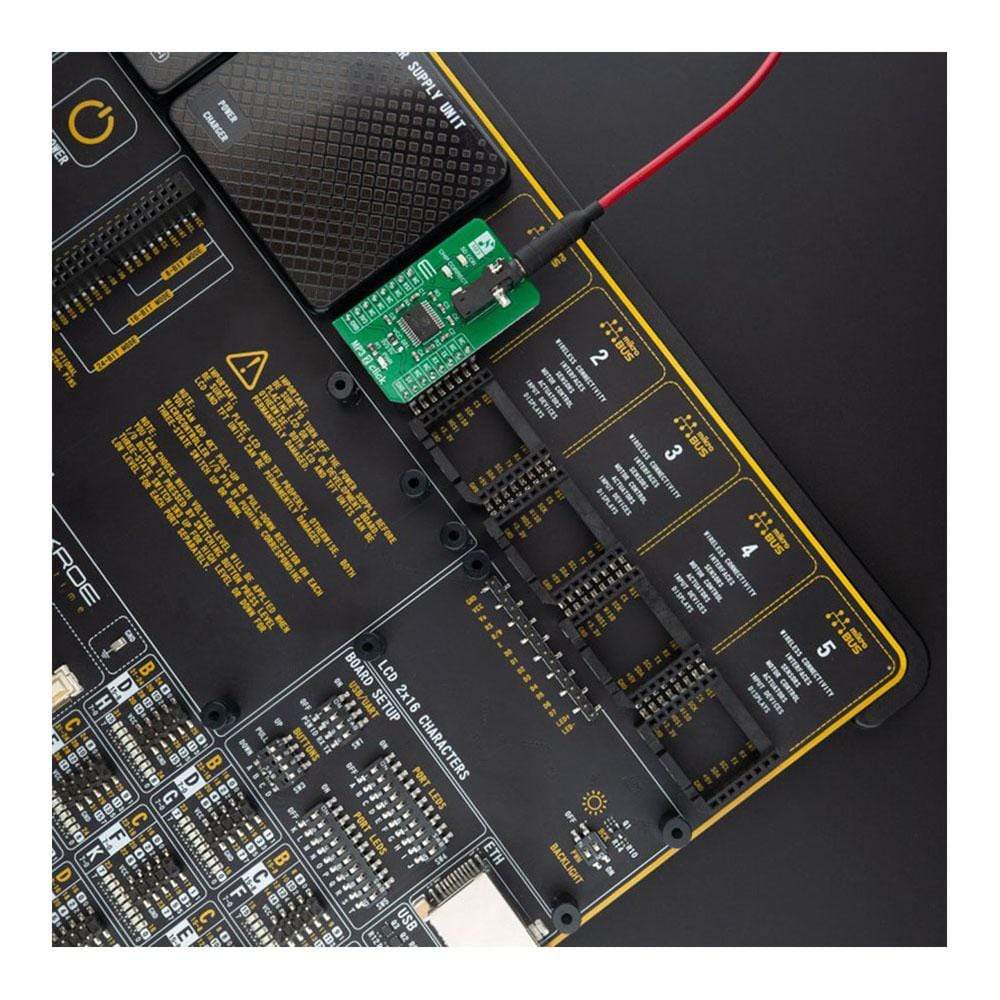
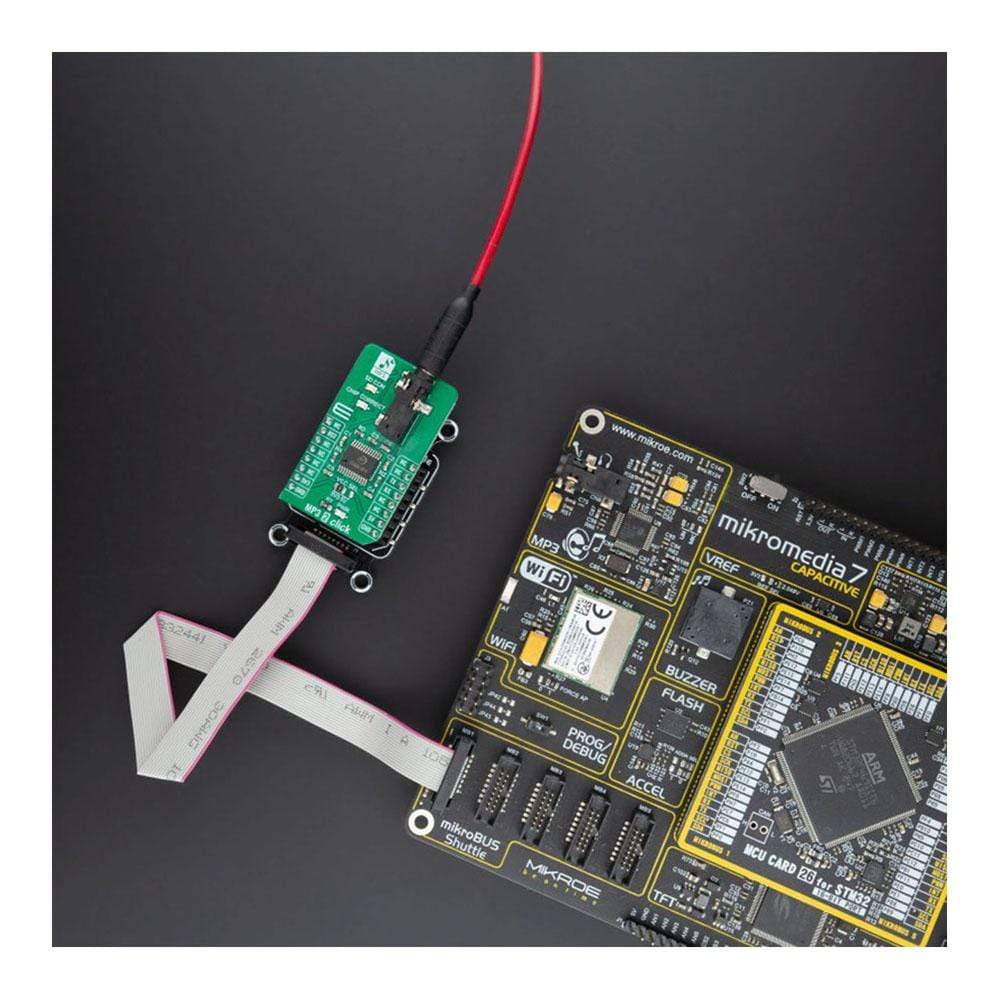
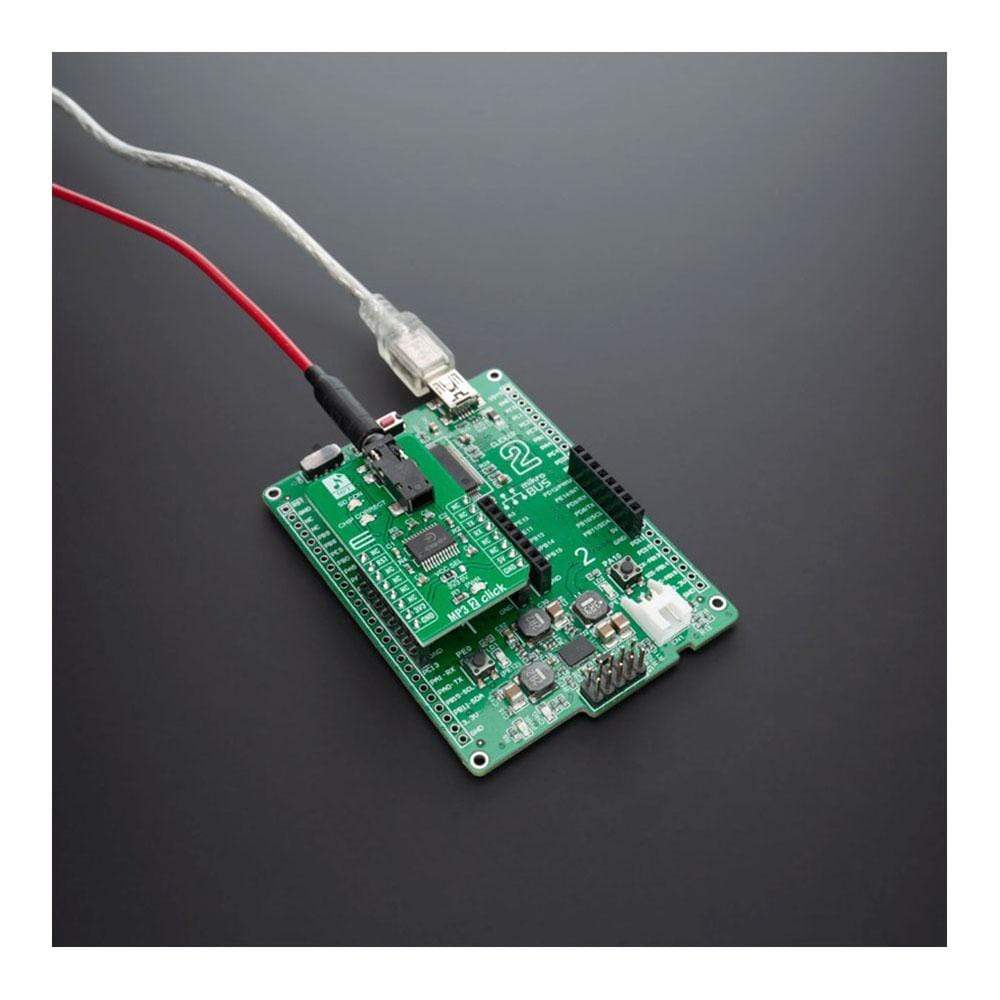
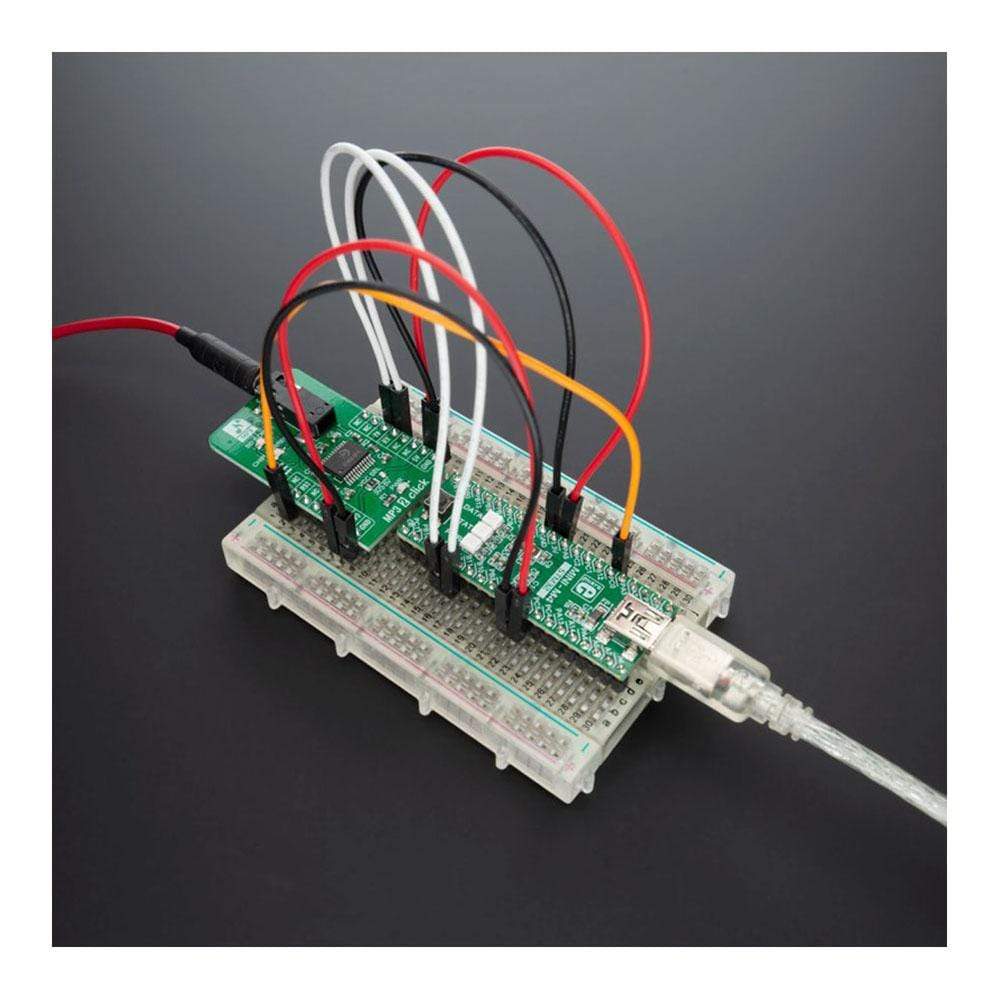
Overview
The MP3 2 Click Board™ is an audio decoder expansion board with an onboard microSD card slot, that enables you to create your personal audio playback system. It holds the KT403A, a SOC chip solution with intergraded MCU, hardware audio MP3/WAV decoder and DSP, from Shenzhen Qianle Microelectronics Technology Co. Ltd.
All the mentioned integrated hardware components enable the MP3 2 Click Board™ board to guarantee good stability and tone quality. You are able to use UART serial communication to control this board and do diverse operations with music files from microSD cards such as Play, Pause, Volume Up/Down, and many more. These features make MP3 2 Click Board™ the ideal solution for audio devices, in any application that demands an Audio Playback Module for MP3, WAV.
Downloads
La carte MP3 2 Click Board™ est une carte d'extension de décodeur audio avec un emplacement pour carte microSD intégré, qui vous permet de créer votre propre système de lecture audio. Elle contient le KT403A, une solution de puce SOC avec MCU intégré, décodeur audio matériel MP3/WAV et DSP, de Shenzhen Qianle Microelectronics Technology Co. Ltd.
Tous les composants matériels intégrés mentionnés permettent à la carte MP3 2 Click Board™ de garantir une bonne stabilité et une bonne qualité sonore. Vous pouvez utiliser la communication série UART pour contrôler cette carte et effectuer diverses opérations avec des fichiers musicaux à partir de cartes microSD telles que Lecture, Pause, Volume haut/bas et bien d'autres. Ces fonctionnalités font de la carte MP3 2 Click Board™ la solution idéale pour les appareils audio, dans toute application nécessitant un module de lecture audio pour MP3, WAV.
| General Information | |
|---|---|
Part Number (SKU) |
MIKROE-4159
|
Manufacturer |
|
| Physical and Mechanical | |
Weight |
0.019 kg
|
| Other | |
Country of Origin |
|
HS Code Customs Tariff code
|
|
EAN |
8606018717712
|
Warranty |
|
Frequently Asked Questions
Have a Question?
Be the first to ask a question about this.







